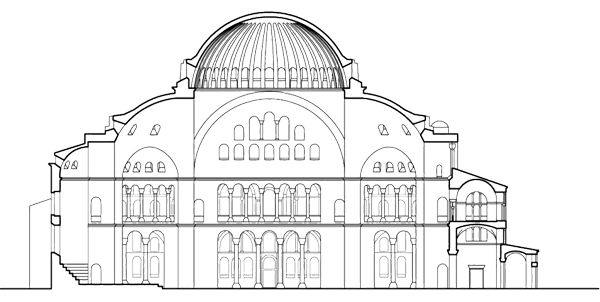

| MTK | Onlinepublication | A01UP2 | Collaborative Research Centre 933 of the German Research Foundation. Material Text Cultures. Materiality and Presence of Writing in Non-Typographic Societies |
 |
|
Subproject |
|
Subproject A01 UP2
of the CRC933 |
Lettered and inscribed. Inscriptions in urban space in the greco-roman period and Middle Ages. Late Antique Culture(s) of Inscription in the Imperium Romanum – on the Changes in Communication Structures and Commemorative Media at the End of Antiquity |
Members |
|
Description InstitutionHeidelberg University: Byzantine Archaeology and History of Art KeywordsHagia Sophia, Capitals, Monograms, Byzantine studies, Byzantine Archaeology, History of Art |
Hagia Sophia, the impressive main church of Constantinople founded by Justinian and Theodora in 527–532 A.D. lacks a monumental dedicatory epigram. Instead, capital monograms function to represent the donors. The monograms can be found on almost every capital of the building and have been deciphered as names and titles of the emperor and empress: IOΥΣTINIANOΥ / BAΣIΛEΩΣ und ΘEOΔΩPAΣ / AΥΓOΥΣTAΣ. Despite the outstanding importance of the building for the field of Byzantine Archaeology the 68 monogramed capitals never have been taken serious as an in situ ensemble. In his ekphrasis of 562 A.D. Paul the Silentiary gives a detailed description of the precious materials used for the construction and decoration of the church. By stressing the origin of the various marbles he takes the listener from Greece to Phrygia, Egypt, Asia, Numidia, France and Thessaly. In this way Paul conceptualised the Church as a 'material map' of the Empire representing the territorial and ideological power and properties of Justinian. The omnipresence of the monogramed capitals all over the building as well as focusing the text to only four words and inflecting them to genitive cases, evokes a culmination of contextual meaning. Aim of the project was to re-evaluate the monogramed capitals as text carrier that generate a stable link of discourse and medium, so that both levels actively reinforce each other. |
Contact |
Heidelberg University Telephone: +49-(0)6221-542512 (secretariat) |
Conditions of use |
|